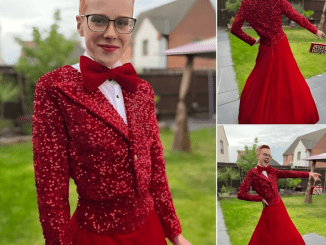Unearthing a graveyard of the past often brings fascinating insights, but the recent discovery in Pień, Poland, is nothing short of chilling. Archaeologists uncovered a grave believed to be that of a “real-life vampire,” sealed with unusual precautions to prevent her from rising again. Known as “Zosia,” this 18-year-old woman’s remains offer a glimpse into the darker superstitions of 17th-century Europe.
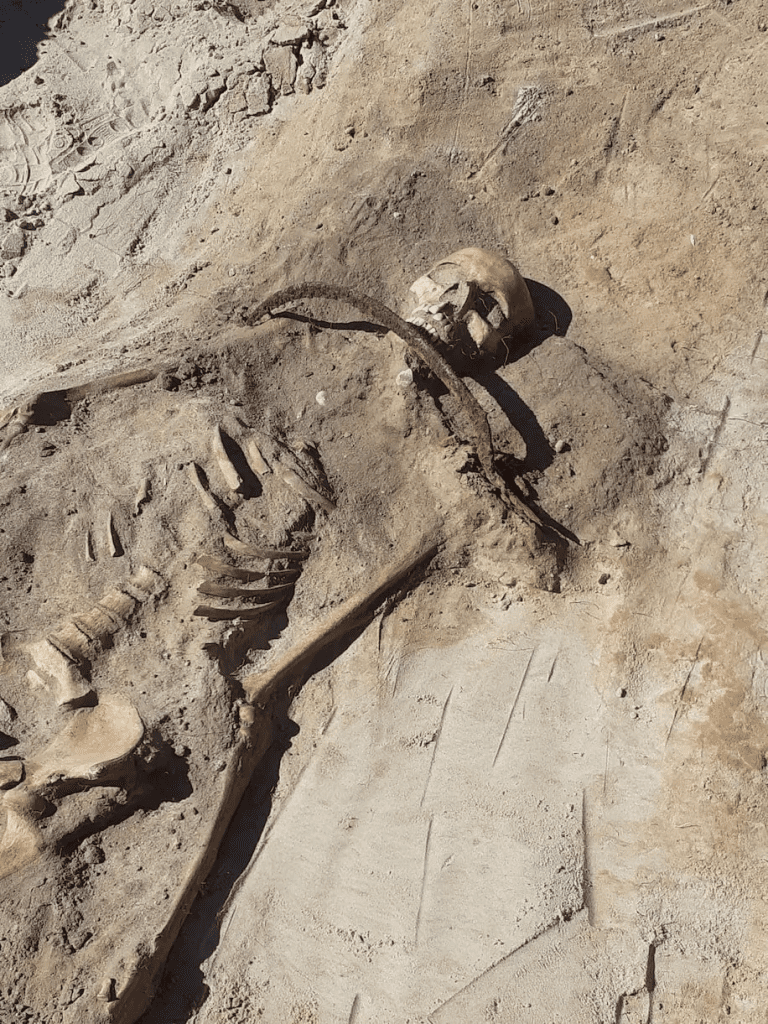
The sickle would’ve ensured that she would be decapitated had she rose from the dead.
The Discovery of Zosia: A Vampire’s Resting Place
Two years ago, in a medieval cemetery located in Pień, Poland, archaeologists stumbled upon a peculiar grave among over 100 others. While the majority of the graves appeared ordinary, one stood out due to its unique and macabre setup.
- Double Protection: Zosia’s remains were found with a sickle placed across her neck and a padlock around her toe—an unusual combination even by the standards of medieval burials. According to Professor Dariusz Polinski, the team leader of the excavation, these measures were intended to “double-seal” the supposed vampire in her grave.
- High Social Rank, Dark Stigma: Interestingly, Zosia was buried with a silk cap, signifying her high social status. However, the sickle and padlock suggest that she was still considered a threat by the villagers. These measures indicate deep-seated fears of the time—fears that transcended social rank and focused on the perceived supernatural danger she posed.
Why Was Zosia Considered a ‘Vampire’?
The grave’s ominous setup raises one obvious question: why was Zosia deemed a vampire by her contemporaries?
- Physical Deformities and Fear: Medical investigator Dr. Heather Edgar, from the University of New Mexico, examined Zosia’s bones and found an abnormality in her breastbone, potentially indicating a deformity that might have marked her negatively in the eyes of the community. During the 17th century, physical deformities were often viewed as signs of the supernatural or as marks of a cursed individual.
- Outsider Status: The Swedish-Polish wars were raging during Zosia’s lifetime, leading researchers to speculate that she might have been Swedish—a potential “unwanted outsider.” This foreign origin, coupled with her physical condition, could have further fueled the villagers’ fears, making her a prime target for accusations of vampirism.
Medieval Burial Practices: Defending Against the Undead
The discovery of Zosia’s grave offers more than just the story of one feared woman; it sheds light on medieval burial customs designed to prevent the dead from returning to terrorize the living.
- Fear of the Living Dead: According to Eastern European folklore, the fear of vampires dates back to the 11th century, when people believed that some individuals could rise from the grave as blood-sucking fiends. By the 17th century, unusual burial practices had become more widespread across Poland in response to these fears.
- Varied Methods of Restraint: Of the 100 graves at the Pień site, around 30 showed signs of restraining practices. Bodies were found face-down to force them to “bite into the ground,” weighed down with stones, or pinned by sickles like Zosia. Some had their heads or legs cut off, while others had coins in their mouths—a known ritual to appease the spirits or prevent the dead from returning.
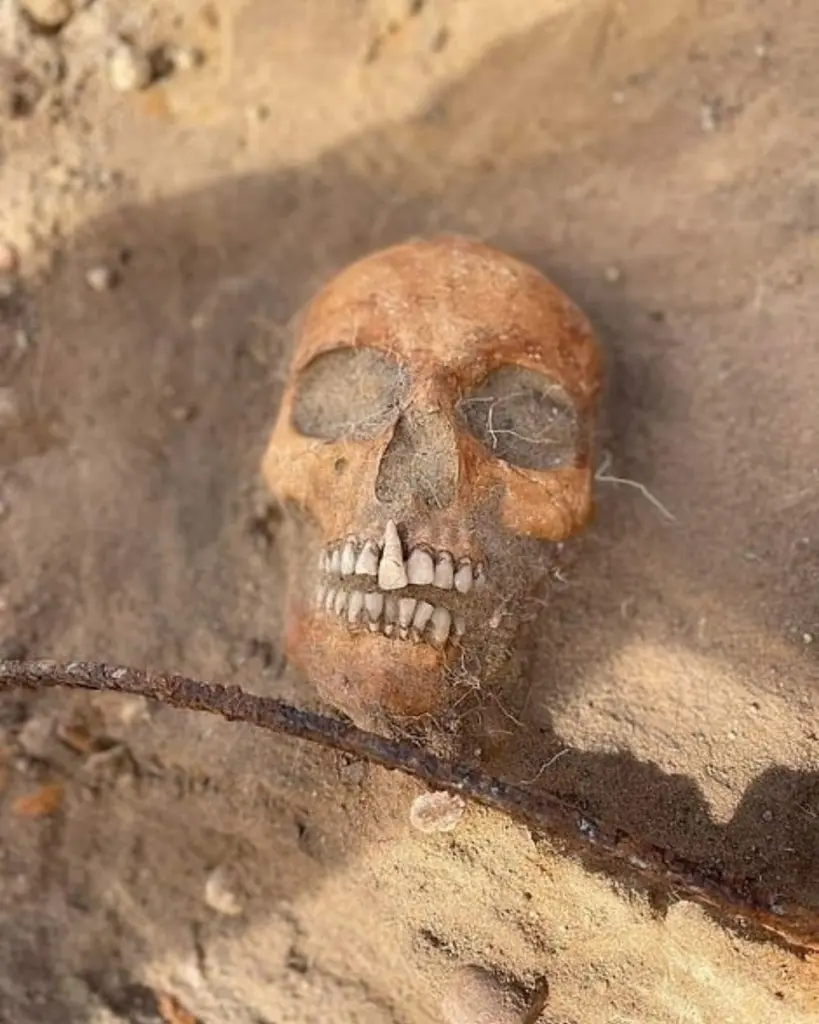
Two years ago, the remains of a “female vampire” were uncovered by archaeologists.
How Zosia’s Face Was Reconstructed
To humanize the mysterious figure of Zosia, Swedish facial reconstruction expert Oscar Nilsson worked on creating a 3D likeness of the alleged vampire.
- Detailed Digital Reconstruction: Nilsson used advanced scanning technology to create a digital copy of Zosia’s skull, which was then printed using a 3D printer. Clay was used to recreate her facial muscles, while silicone added a skin-like texture.
- Depiction of Zosia: The reconstruction suggests that Zosia had fair skin, short hair, and striking blue eyes. A single protruding incisor stood out—possibly adding to her fearsome reputation among villagers who interpreted physical anomalies as evidence of vampirism.
The Mysterious Graveyard of Pień: The ‘Field of Vampires’
The graveyard where Zosia was found has been dubbed the “Field of Vampires” due to the multiple signs of restraint found among the buried remains.
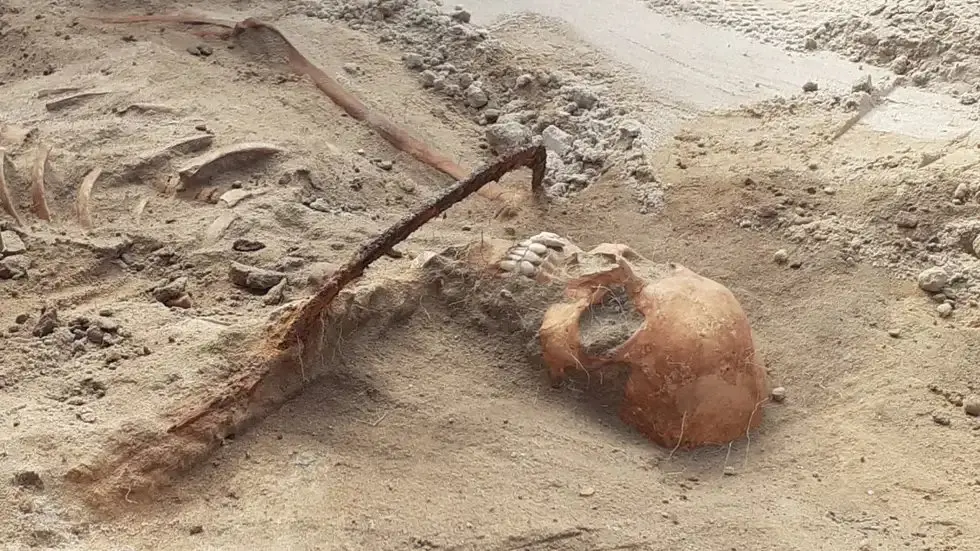
Zosia was the only skeleton found with a sickle around her neck.
- Who Else Was Buried There? Other graves at the site included remains of individuals with syphilis, a partially exhumed child, a pregnant woman, and a man buried with a child’s corpse at his feet. The presence of these individuals suggests that the cemetery was designated for those considered outcasts or cursed.
- No Written Records: Despite the number of graves and unique burial practices, there are no written records detailing who these individuals were or why they were considered dangerous. All graves were left unmarked, indicating an intentional effort to erase the memory of the deceased—another tactic to ensure they did not rise again.
Superstitions and Vampires: Understanding 17th-Century Beliefs
The discovery of Zosia’s grave offers more than a glimpse into medieval superstition; it uncovers a historical obsession with the undead.
- Why Vampires Were Feared: For Eastern Europeans of the 17th century, vampires were not just myths but real threats. Stories of people rising from the grave to drink the blood of the living were not just bedtime tales but deeply embedded fears that shaped everyday life.
- Unusual Burial Practices as Protection: To protect against the “return of the dead,” villagers employed drastic measures. These included burying bodies face down, placing heavy stones on them, or, as in Zosia’s case, using a sickle and padlock to keep the dead restrained.
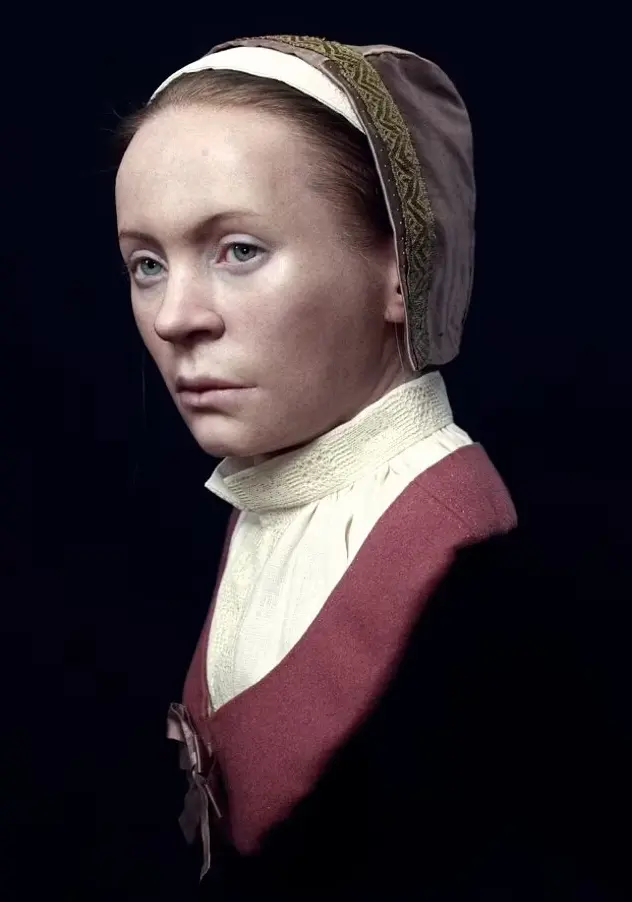
New illustrations of what Zosia might have looked like propose that she had fair skin with blue eyes and short hair.
Upcoming Documentaries and Further Research
Zosia’s story is far from over, as researchers plan to return to the “Field of Vampires” for further excavations.
- Nighttime Excavations: Polinski and his team have announced plans to conduct nighttime excavations using fluorescent lighting, which could reveal new bones or objects missed during previous digs.
- ‘Field of Vampires’ Documentary: The latest findings, including Zosia’s reconstruction, will be featured in a two-part documentary called Field of Vampires, airing on Sky History on October 29 and November 5 at 9 p.m. This documentary promises to delve deeper into the superstitions, legends, and burial practices of 17th-century Poland.
Conclusion: The Legacy of Zosia, the ‘Real-Life Vampire’
The story of Zosia is a powerful reminder of how fear and superstition once shaped society. Buried as a threat to the living, she now serves as a symbol of how cultures reacted to the unknown and misunderstood. While we may never know the full truth of Zosia’s life and death, her story remains an intriguing testament to human fears, beliefs, and the lengths people once went to keep the dead from rising.

